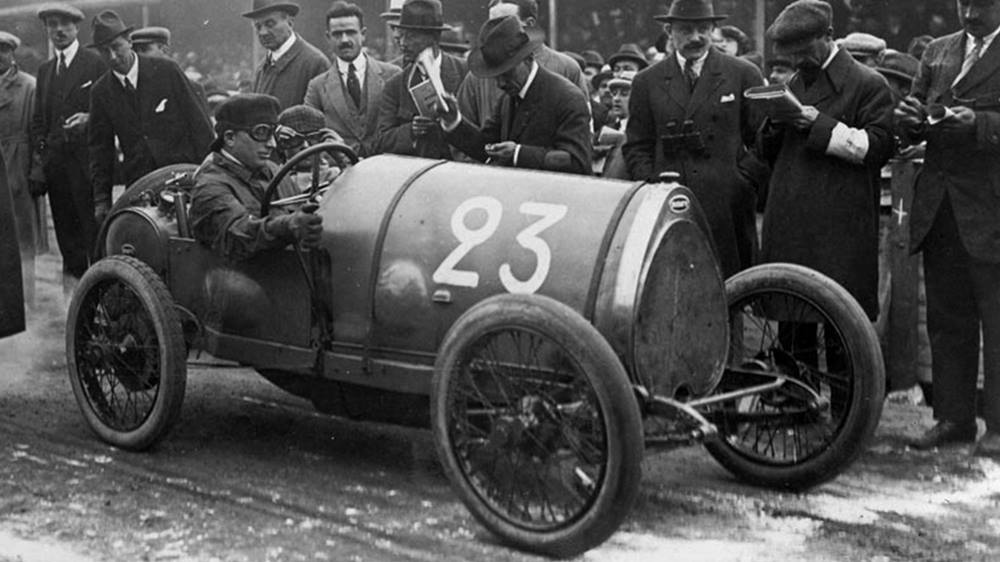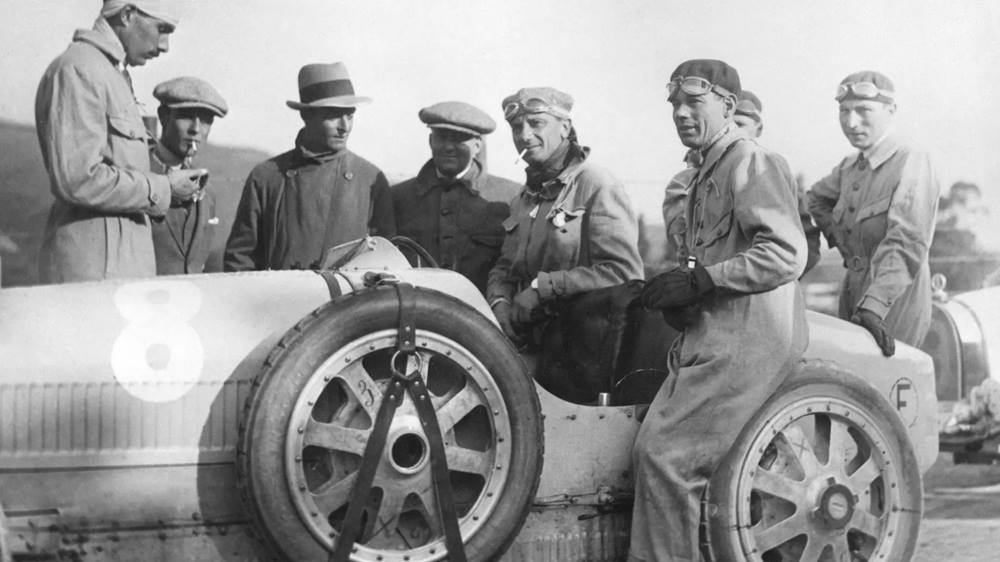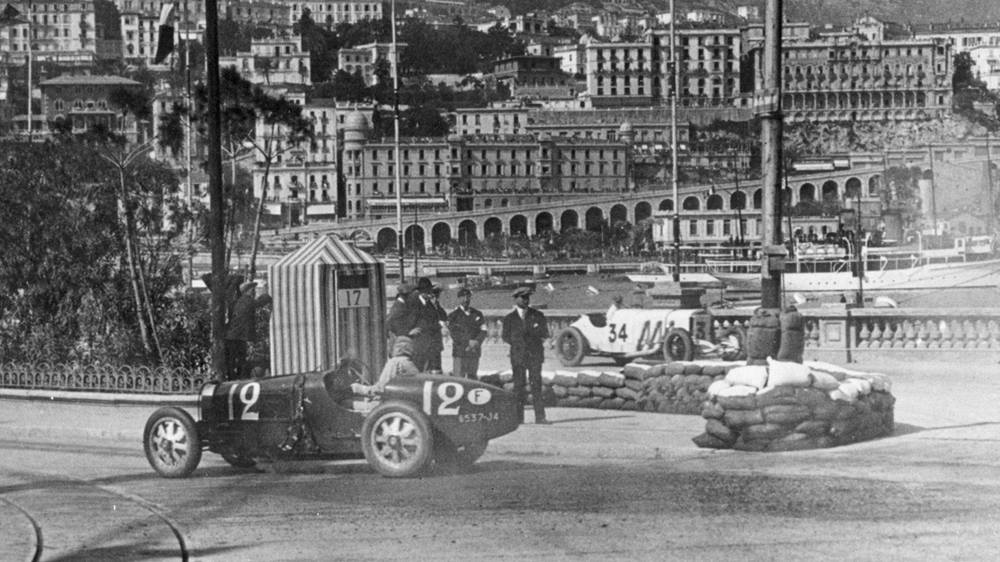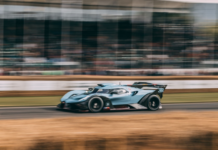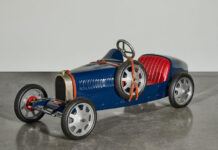Nowadays, you’re far more likely to find caps and goggles at a swim meet than a race track, but before World War II—or before WWI, for that matter—most racing guys and gals sported them. Take a trip back over 100 years with these vintage Bugatti photos, celebrating the marque’s success in an era of leather-strapped hoods, five-inch tires, and incredibly reckless road races. Roll bars? No way.
Though Molsheim these days prefers thumping numbers in record books to filling racing grids, Bugatti was a shining star in the automobile’s adolescent Grand Prix days. The horseshoe grille legacy was forged by the cars represented below—the Type 13 and the Type 35—in large part thanks to the over 2000 victories racked up by Type 35 variants between 1924 and 1930.
Based on Bugatti’s first car, the Type 13 racer sported a 1.3-liter four-cylinder motor and a stumpy wheelbase, which made it ideally suited for hill climbs. Two spark plugs in each combustion chamber and one of the first-ever four-valve heads distinguished these stubby, reliable, and successful racers.
After the slight interruption of WWI, Bugatti got production rolling again in 1919. Maximum displacement was a tick under 1.5 liters, with an output of roughly 50 horsepower. After the Type 13, Bugatti experimented with different wheelbase lengths, resulting in a family of Type 13 derivatives including the Type 15, 17, 22, and 23.
Likely the winningest Bugatti model ever, the Type 35 showcased Bugatti’s 2.0-liter straight-eight. Though the Type 35 wasn’t the first Bugatti to get the eight-cylinder motor (that honor belonged to the single-carb Type 29/30), it was the first Molsheim car to get a double roller bearing and triple ball-bearing crank design. An additional carburetor bumped the straight-eight’s output in the Type 35 (originally naturally-aspirated) to roughly 95 horsepower, which was all harnessed by drum brakes operated via cable and a lever mounted on the car’s side. Tires mounted on eight-spoke, cast-aluminum wheels measured a grand five inches, and, in 1925, Bugatti shipped a Type 35 to Sicily for its first-ever Targa Florio to test its mettle.
The Targa Florio was no countryside cruise. Founded by a well-to-do local fascinated by motor cars and determined to set up a motor car race on his home island, the first Targa Florio ran in 1906 with a field of 10 entries. Dozens of hairpins tracing drop-offs and triple-digit elevation changes over roughly 90 miles favored shorter-wheelbase models—and drivers with some serious guts.
The photo above depicts the Type 35’s first-ever Targa Florio win. The Sicilian endurance race was especially significant because neither the 24 Hours of Le Mans nor the Mille Miglia existed yet; they started in 1923 and 1927, respectively. Type 35s would go on to notch five consecutive wins at the Targa Florio alone—between 1924 and 1930, Type 35s got their horseshoe grilles over the finish line over 2000 times.
The 35 B bumped up displacement to 2.3 liters over the original 2.0-liter straight-eight and, thanks to a three-lobe, Roots-type supercharger, power increased to roughly 138 horsepower. Though it was the final Type 35 variant, the 35 B wasn’t the only supercharged one; the earlier 35 C and 35 T, the latter tailored for the Targa Florio, also sported forced induction. The Type 35 B boasted a win at the first Monaco Grand Prix in 1929, pictured above, at the hands of William Grover-Williams. The pair, representing the works team, averaged 80.194 km/hr for a final time of 3 hours and 56 minutes.
Total Type 35 production numbered around 340, though that number remains a bit hazy. In 1931, Bugatti replaced the Type 35 on Grand Prix circuits with the Type 54, which retained the supercharged straight-eight configuration but used twin overhead camshafts and displaced a monster 4.9 liters.
If given the chance, would you travel back in time to 1920s or ’30s Grand Prix racing? Let us know in the Hagerty Forums below.
Report by hagerty.com
Photos by Bugatti


